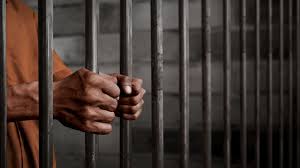

His name was Xabier González, 28 years old, but his name and last name were not known until he died in a cell in the Zaballa prison in Donostia-San Sebastián in April. His family members were aware of his death through a phone call informing them of his death. According to the Salhaketa association, her three daughters were unable to see her father in the two-year and three-month period between the barrotes. In addition, at the last stage of her prison, they denied her partner the right to see her. The corpse was incinerated without knowing the results of the first autopsy. Xabier González has become a history of death lists in prisons.
Xabier is the fourth prisoner who has been seized since January. However, no explanations or responsibilities have yet been made known. Since 1 December, 90 people have lost their lives in prisons in the Spanish State. Over the past 40 years, more than 15,000 prisoners have died before they regain their liberty. Four out of ten committed suicide or died from drug use. The problem belongs to the group of 60,000 people, which ranks fourth in the ranking of European states.
The end of torture and the release of persons with incurable disease are the first objective of the group of prisoners. These are some of the fourteen points on the table they have drawn up, made by the thirty inmates of several prisons.
According to Article 25 of the Spanish Constitution, “prison sentences and security measures should be aimed at the reintegration and training of prisoners”. This mandate is binding, it is in the area of freedoms and rights. However, advocates of a generous and sacrosanct charter appear to be looking sideways in protecting the people under their protection by the State.
The report of the European Commission for the Prevention of Torture or of the Council of Europe, the largest continental organization in human rights, repeatedly states that “Spanish prisons are torture, ill-treatment and infamous aggressions”. Between 2004 and 2016, the Coordinator for the Prevention of Torture analysed and documented the situation of the 961 prisoners who have been subjected to such treatment. It also denounced other vulnerable cases, such as the denial of the third grade to people with chronic and incurable diseases, a measure found in prison regulations. This attitude is common and everyday.
Precisely, the end of torture and the release of people suffering from an incurable disease are the first objective of the group of prisoners. These are some of the fourteen points on the table they have drawn up, made by thirty inmates from different prisons in the Spanish State. This group has already proposed three years ago an appeal for effective fighting from within. Since then, they have taken various initiatives to meet their demands. The last, the joint hunger strike that took place between 1 and 15 May.
Today, at a time when we are experiencing the consequences of the Altsasu case and the Referendum of 1 October, prisons are areas of repression against political dissent. In this way, we should open our eyes and question the general model of punishing states. Are political prisoners not the sectors we have left out of society? That is to say, the people who isolate them in their cells and condemn them to oblivion. Xabier González won't see the aurora again. It is, however, in our hands to break the silence that has been imposed around its history and similar ones. Because we don't count the terrible experiences that have stopped being.